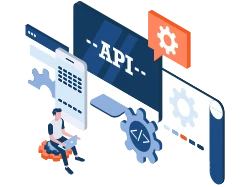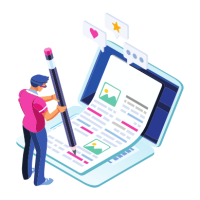Get In Touch
Unlock the full potential of your business with our custom software development and API development services. Contact us today to discover how our expertise can revolutionize your operations.


A business analyst serves as a bridge between stakeholders and the development team. They help identify and translate business needs into software requirements, ensuring the final product aligns with the business goals.

By defining the project's scope and continually managing it, business analysts help prevent scope creep—the tendency for the project to expand beyond its original objectives.

By defining the project's scope and continually managing it, business analysts help prevent scope creep—the tendency for the project to expand beyond its original objectives.

Business analysts can anticipate potential risks and devise strategies to mitigate them, saving time, effort, and costs.

They are crucial in facilitating communication between stakeholders, developers, and other project members, ensuring collaboration and consensus.

Through continuous monitoring and feedback, business analysts can help improve the quality of the solution, ensuring it satisfies the users' needs and preferences.

Business analysts help increase the return on investment by focusing on delivering value. They prioritize the most valuable features to be developed, ensuring that the software offers the maximum benefit to the business.
At Konverge, we adopt a strategic and comprehensive approach to business analysis, tailoring it to the unique needs of each software development project. Konverge remains committed to fostering transparency, maximizing value, and ensuring alignment with our client’s objectives throughout the business analysis process. Our process typically includes the following stages.
We begin by identifying all parties who the software solution will impact. This includes our direct client and their customers, employees, suppliers, or other individuals with a vested interest in the software’s success.


We work closely with the identified stakeholders to gather comprehensive requirements. Using techniques like interviews, surveys, workshops, and direct observations, we understand what the software needs to achieve and why it is needed.
he gathered requirements are then scrutinized for clarity, consistency, and relevance, removing any ambiguities or redundancies. Once refined, these requirements are documented in a clear and accessible format, serving as a roadmap for the software development process.


The documented requirements are then validated with stakeholders to confirm they precisely mirror the desired outcomes. This validation process ensures all parties share a common understanding of the project goals, minimizing potential misunderstandings down the line.
We recognize that requirements can evolve as the project progresses. Our team adeptly manages and tracks changes to the requirements, maintaining open communication with stakeholders to keep everyone informed of any alterations.


Once the software is developed and implemented, we evaluate its performance against the initial requirements. We assess whether the solution has successfully delivered the desired outcomes, identifying potential improvement areas and making necessary recommendations.
The result is a final requirements document, often called a Software Requirements Specification (SRS) document, which comprehensively describes the intended purpose and environment for software under development. This document defines what the software will do and how it will perform. It serves as an agreement between the customer and the developer and is a critical element in software development.
The System Requirement Specifications include the following sections


This section provides a general description of the software product, including product perspective, functions, user characteristics, constraints, assumptions, and dependencies.
This is the main section of the SRS, detailing all the requirements of the software. This includes functional requirements, performance requirements, design constraints, logical database requirements, user interface requirements, etc.


These include criteria used to judge a system’s operation rather than specific behaviours. This could consist of reliability requirements, efficiency requirements, maintainability requirements, usability requirements, etc.
This includes all other information that is related to the SRS. This could include sample inputs/outputs, results of feasibility studies, etc.

Unlock the full potential of your business with our custom software development and API development services. Contact us today to discover how our expertise can revolutionize your operations.
